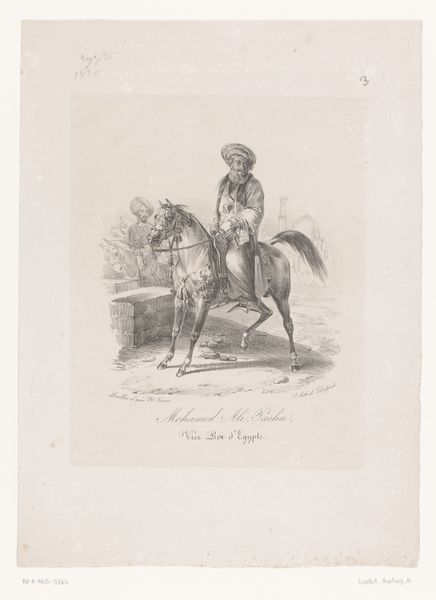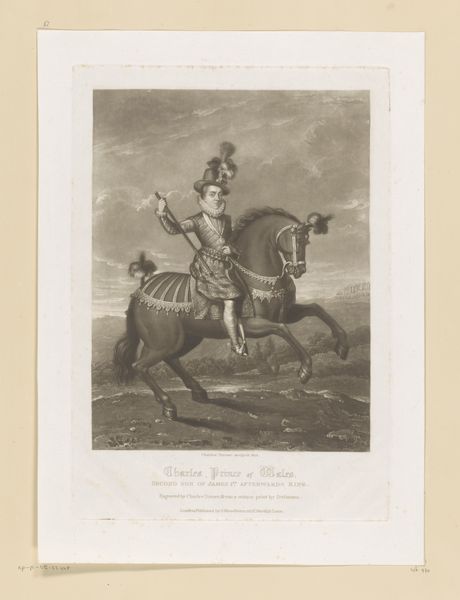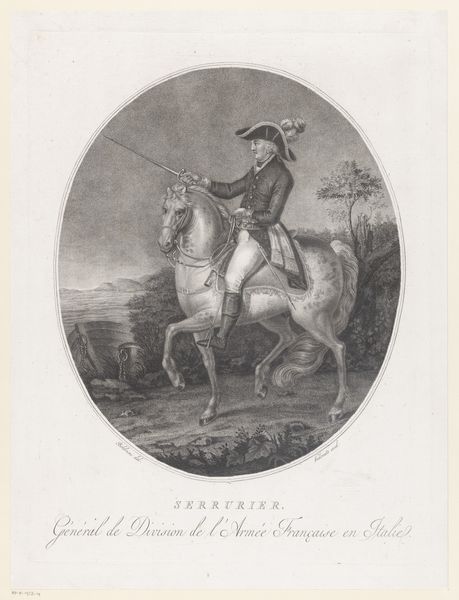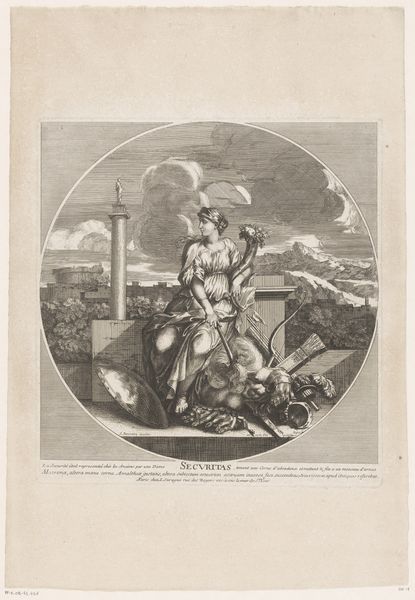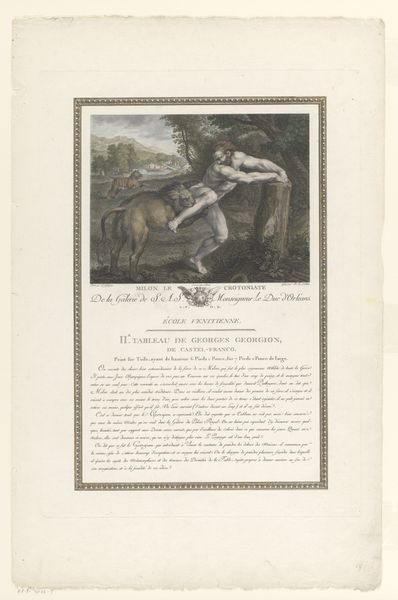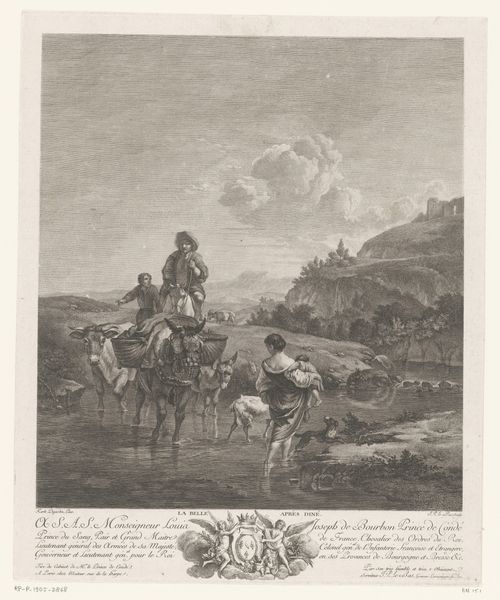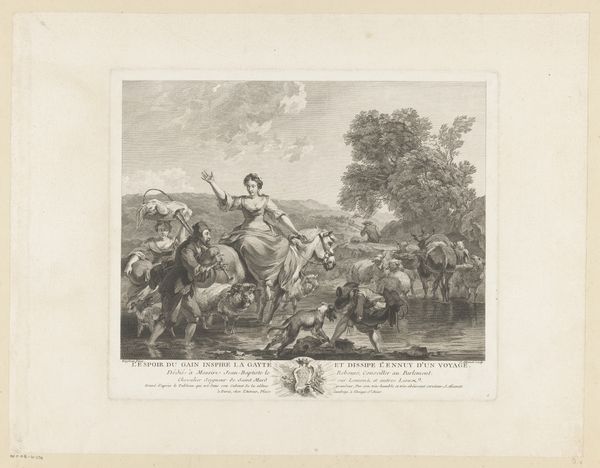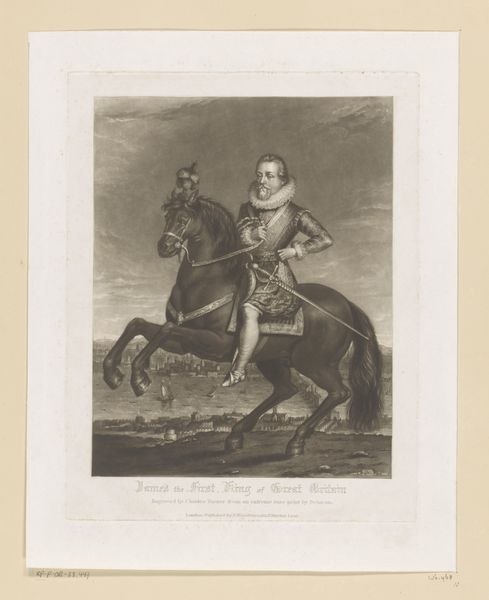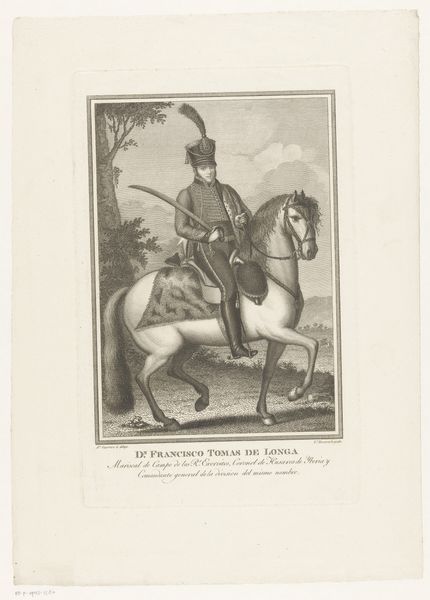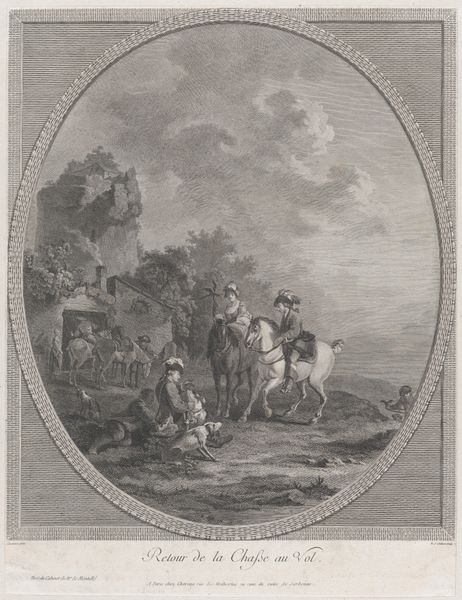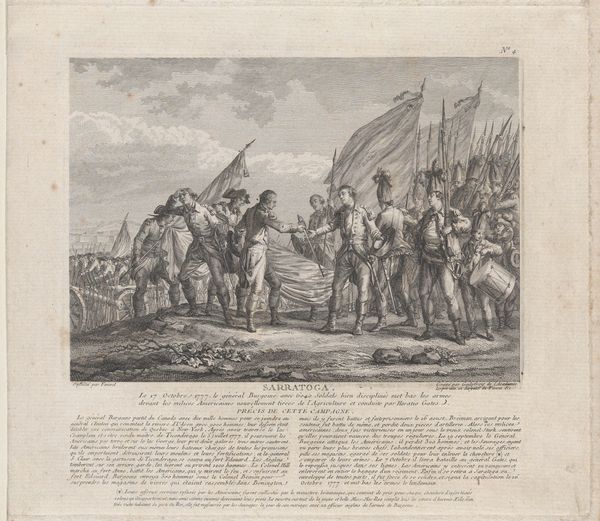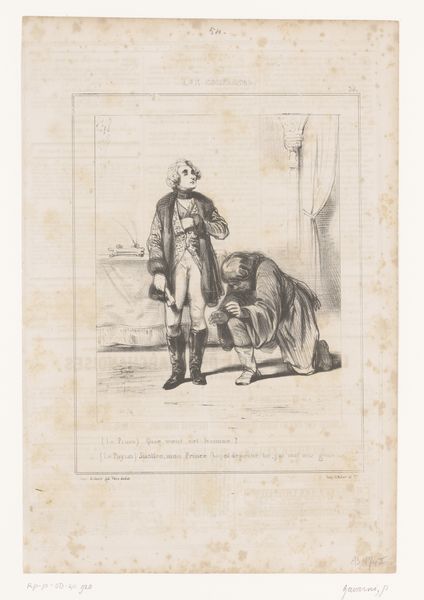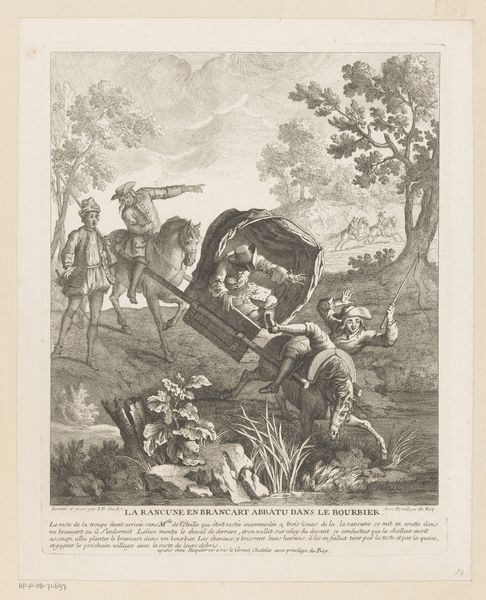
Dimensions: height 418 mm, width 273 mm
Copyright: Rijks Museum: Open Domain
Alexandre Massard created this portrait of Charles V on horseback during a period of significant social and political upheaval in Europe. This print presents Charles V as a symbol of power and authority, reflecting the historical context of European monarchy and colonialism. Consider how gender and class intersect in this representation of Charles V. The portrait not only embodies masculine ideals through its portrayal of military prowess, but it also reinforces Charles’s elevated social status through his regal bearing and attire. Massard's print prompts us to reflect on how such images were employed to legitimize and perpetuate hierarchical social structures. What does it mean to depict a ruler on horseback? How does this imagery contribute to the construction of identity, both for the subject and the viewer? In the end, this portrait, and prints like it, reflect the emotional and personal dimensions inherent in the construction and maintenance of power.
Comments
No comments
Be the first to comment and join the conversation on the ultimate creative platform.
